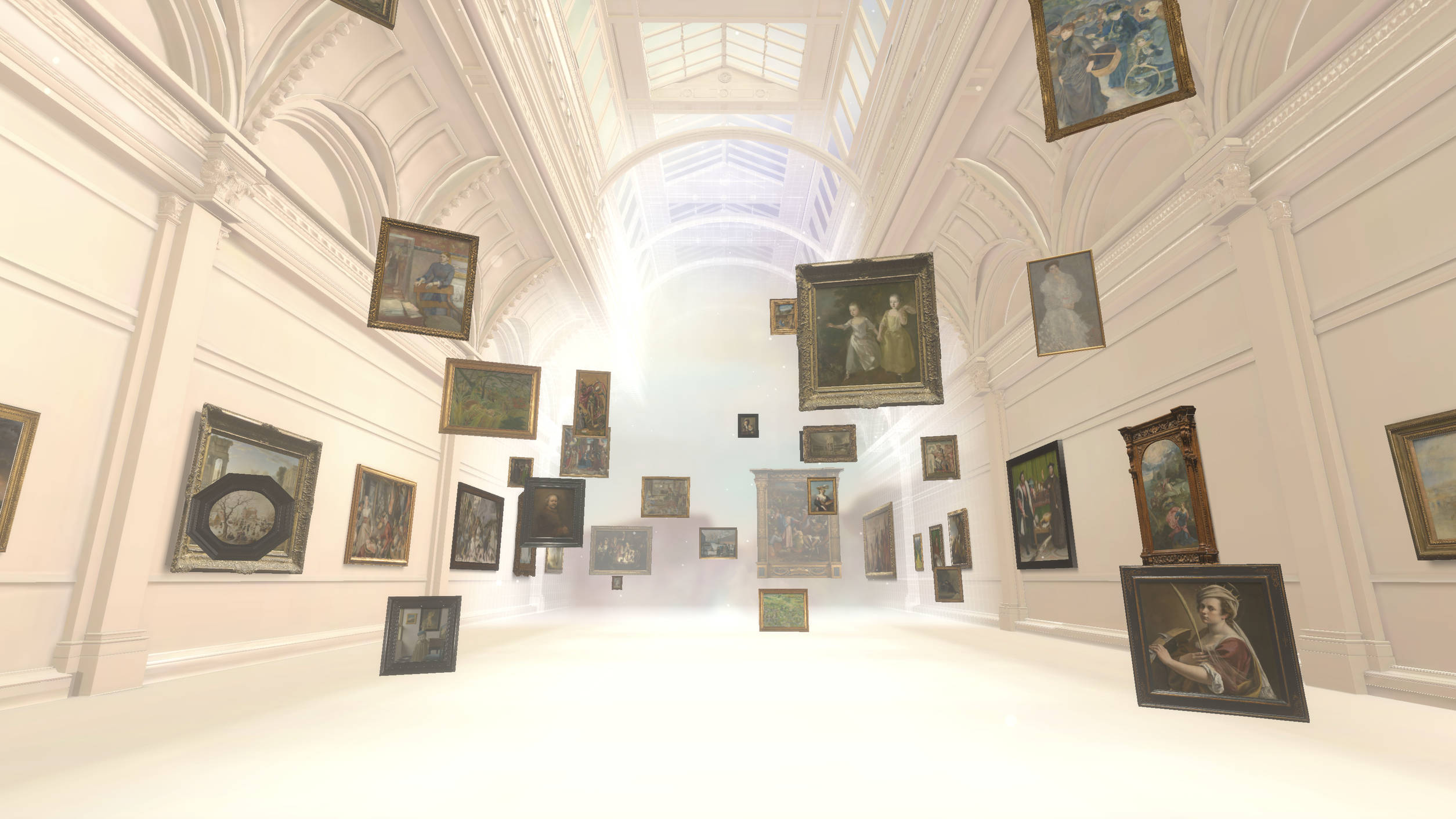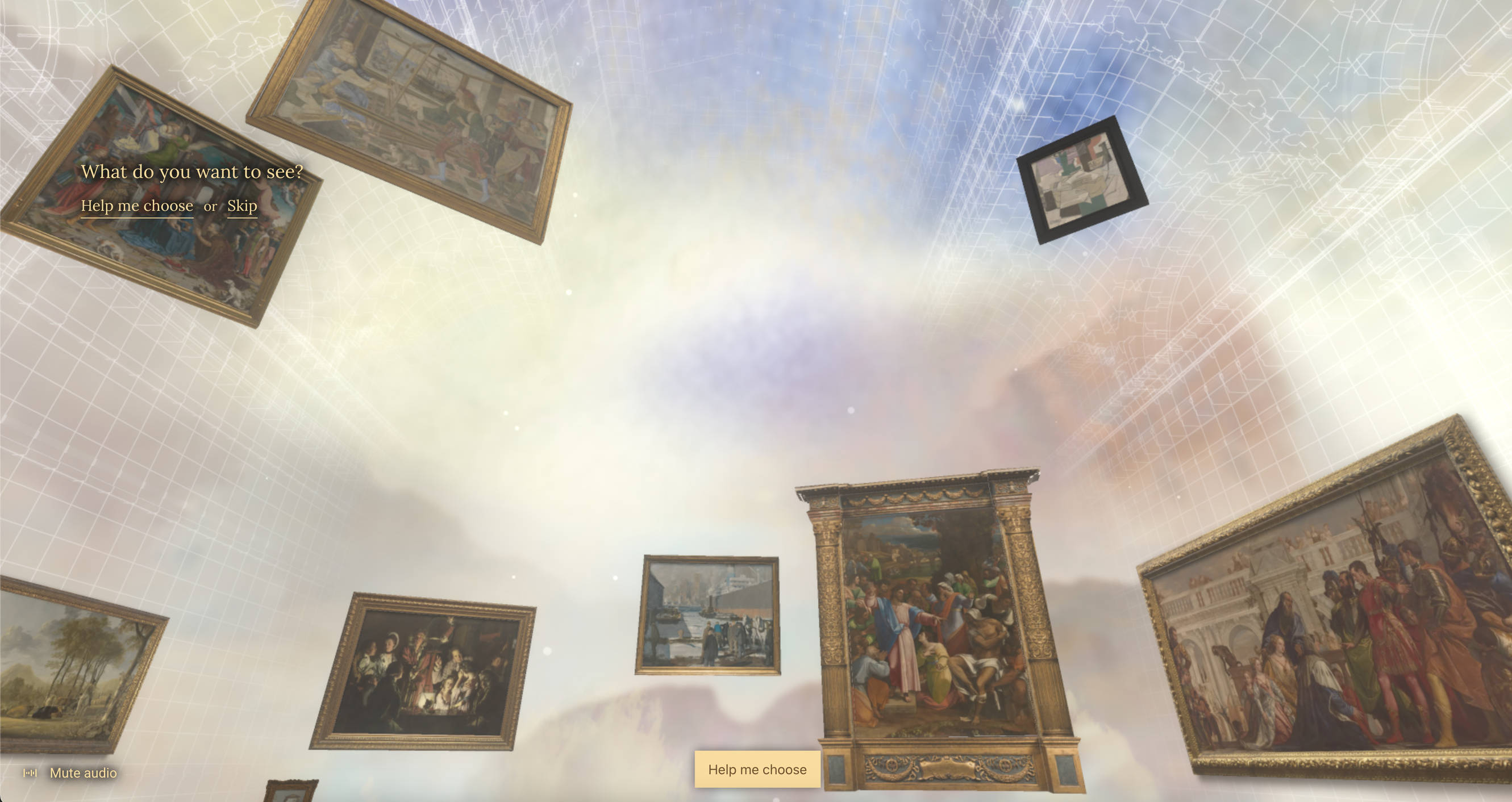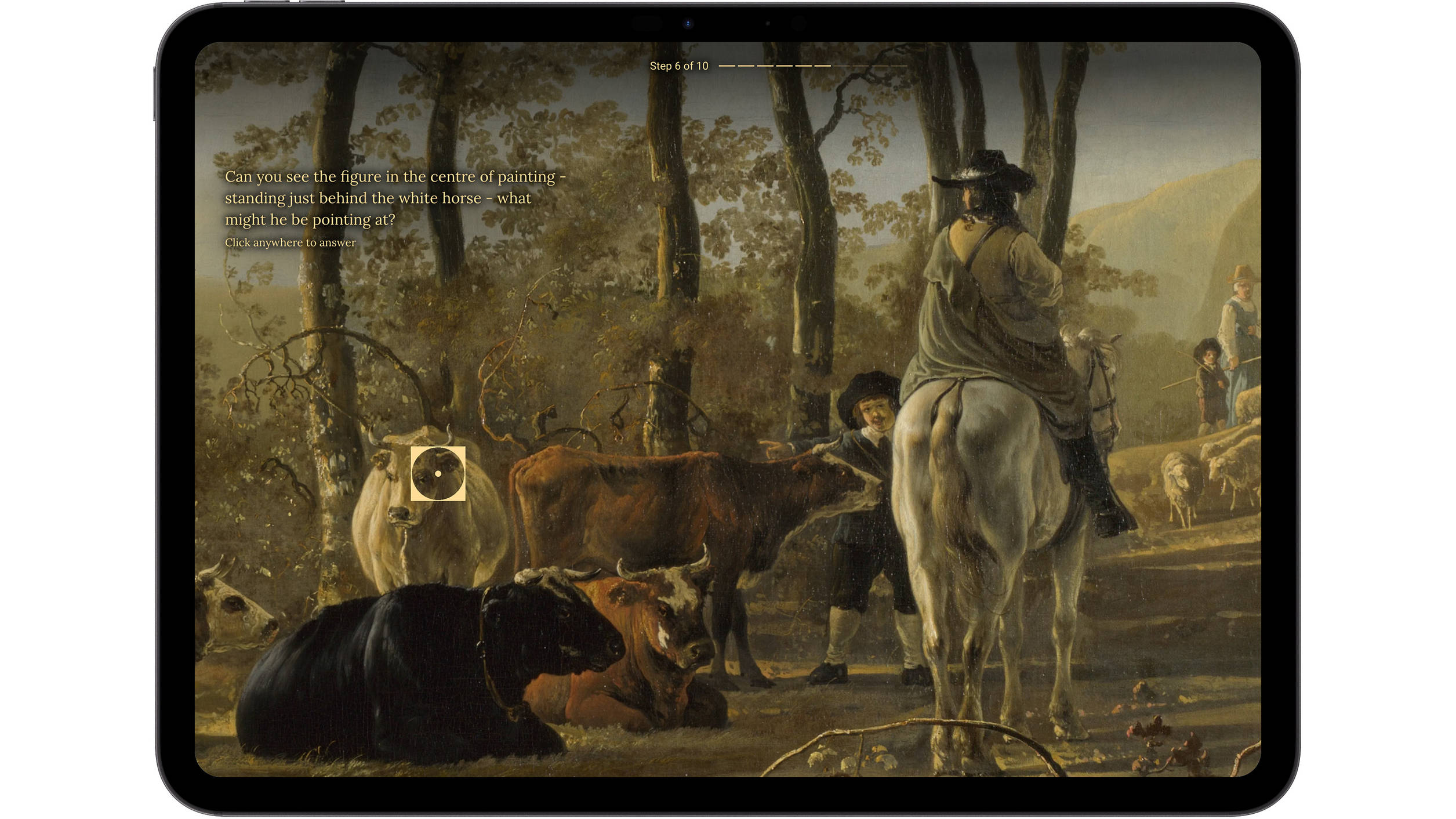National Gallery
Together with the National Gallery, we created an immersive digital experience where visitors engage with art through thoughtful interactions. Using innovative design and AI technology, we've transformed static masterpieces into responsive canvases that create meaningful connections between people and paintings.
A virtual journey through the national gallery
In 2025, the National Gallery will celebrate its 200th anniversary. In honor of this milestone, the museum wanted to create a virtual version that not only makes the most famous artworks accessible but also sets an innovative standard for museums worldwide. The challenge was significant, but the ambition was even greater.
The art of a good strategy
How do you create an immersive virtual art experience? Simply viewing artwork digitally is not the same as experiencing it. Traditional digital art experiences are often functional: visitors browse through artworks and zoom in. But do they really see the painting? In collaboration with Q42, we developed a vision for an immersive experience that goes beyond the physical museum visit.
Bringing art to life
Together with the National Gallery, we developed a virtual experience where the experience itself is central. Our goal was to bring art to life, allowing each visitor to build a personal connection with the paintings. Inspired by a curator at the National Gallery, who encourages visitors to look at art differently by asking questions. We wanted to translate this approach to an online environment.

The Imaginarium
From this concept phase emerged the Imaginarium, a virtual space where visitors can experience the masterpieces of the National Gallery in a new way. This innovative 3D experience invites visitors to come closer than ever before. In the Imaginarium, paintings float through space, a world with its own character, made possible by 3D artist Malou Sandig.
An experience that feels like a dream
Visitors enter the Imaginarium through a virtual version of Room 36, the most famous room in the National Gallery. After a brief tutorial, they can explore on their own or be guided through the Imaginarium. Just like in a dream, the experience begins in reality, but the further you go into the Imaginarium, the dreamier it becomes.

Truly experiencing art, not just viewing it
The user experience of the website is designed to leave room for imagination. With a focus on dialogue instead of functionality, visitors are guided through the works by means of questions. The goal is not to teach, but to offer a new way of looking at art.
Personal connection with artworks
In the Imaginarium, visitors can float into a painting by clicking on it. With the high-res storytelling tool Micrio, the works can be viewed in every detail. The real experience lies in the exploration mode, which is activated by answering questions. This personal approach compels visitors to dive deeper into the painting and truly experience the art.

AI brings paintings to life
After answering a number of questions, the painting comes to life thanks to AI. Some elements begin to move subtly, and sounds enhance the story. These animations respect the integrity of the artworks and add a new dimension to the experience.
A smooth and pleasant experience
As with previous projects, such as for the Rijksmuseum, we paid a lot of attention to a smooth user experience. The application works excellently on both desktop and mobile devices. Thanks to the open-source headless CMS Sanity, we were able to create a personalized experience.
Although the Imaginarium is now established, the Virtual Gallery is not yet complete. We hope to create additional digital worlds in the future, such as a laboratory where visitors can collect and create artworks. Together with the National Gallery, we want to introduce more people to art in a new way.